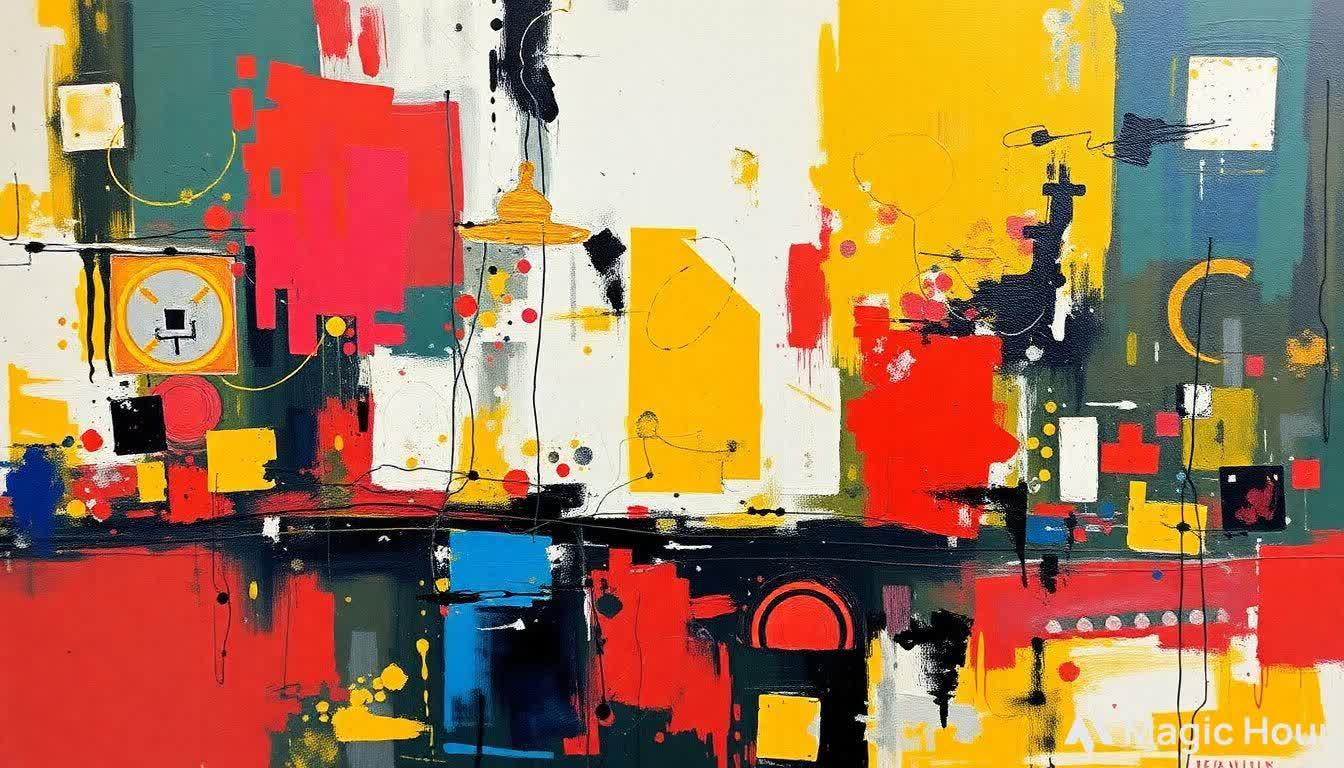What Does Abstract Expressionism Mean in Art?

Abstract Expressionism is more than just a style—it's a revolution in how we understand, interpret, and experience visual art. Emerging in the mid-20th century, this influential movement emphasized emotion, spontaneity, and individuality over traditional representation. But what does Abstract Expressionism really mean in art?
In this article, we’ll explore the roots of the movement, unpack its defining characteristics, highlight key artists, and examine its lasting impact—both historically and in the context of modern art.
Defining Abstract Expressionism
Abstract Expressionism refers to a movement in American painting that developed during the 1940s and 1950s. At its core, it represents a rejection of realism in favor of personal expression through abstract forms, brushwork, and color.
It’s “abstract” because it does not depict objects or scenes as they appear in the real world. It’s “expressionist” because it emphasizes the artist’s inner emotions and spontaneous creative process. Together, these elements create a form of art that is raw, authentic, and often deeply psychological.
For a compelling look at how these values persist in contemporary practice, explore the visionary creations found in Sébastien Montel’s body of work—where abstract expression meets modern insight.
The Origins of a Groundbreaking Movement
The rise of Abstract Expressionism is closely tied to the social and political climate of the time. In the aftermath of World War II, many artists sought new ways to express the anxiety, trauma, and complexity of the modern world. No longer satisfied with traditional forms, they turned inward—making art that spoke from, and to, the subconscious.
During this period, New York City became a hub for artistic innovation, and many influential figures like Jackson Pollock, Willem de Kooning, and Mark Rothko emerged on the global stage.
Today, the spirit of that movement continues to live on in the works of contemporary artists such as Sébastien Montel, whose abstract creations reflect a similarly intuitive and emotionally charged approach to form and color.
Key Features of Abstract Expressionist Art
While individual styles vary greatly, Abstract Expressionist works generally share the following features:
1. Gestural Brushwork
Artists often used bold, sweeping strokes—or even drips and splatters—to create compositions that were as much about movement as they were about form.
2. Large-Scale Canvases
The sheer size of many Abstract Expressionist paintings forces viewers to physically and emotionally engage with the artwork.
3. Non-Representational Imagery
Rather than painting identifiable subjects, artists created works that focused on shapes, colors, lines, and textures.
4. Emphasis on Process
The act of painting was as important as the finished piece. Many artists emphasized intuition, improvisation, and the subconscious.
5. Emotional Intensity
These works were deeply personal, often reflecting inner conflict, existential angst, or a search for meaning.
Notable Artists and Their Contributions
Jackson Pollock
Best known for his drip technique, Pollock let gravity and movement dictate the flow of paint, creating chaotic yet balanced compositions that feel both accidental and intentional.
Mark Rothko
Rothko’s work is defined by large, luminous blocks of color that evoke spiritual depth and emotional stillness. His paintings are often meditative experiences for viewers.
Willem de Kooning
Fusing abstraction with figuration, de Kooning brought an intense, physical energy to his canvases, especially in his distorted portrayals of the human form.
Franz Kline
Using primarily black and white, Kline created powerful, minimalist compositions that emphasized gesture and contrast.
Why Abstract Expressionism Still Matters
Abstract Expressionism broke down barriers in art, opening the door for later movements like Minimalism, Conceptual Art, and even Street Art. It also shifted the center of the art world from Paris to New York—a move that permanently changed the global art landscape.
Today, the movement's freedom of expression and emotional honesty continue to inspire both artists and audiences. It invites us to connect with art not just through what we see, but through what we feel.
This legacy is echoed in the modern works of artists such as Sébastien Montel, whose portfolio reflects a deep engagement with expressive abstraction, modern materials, and the evolving emotional language of art.
Final Thoughts
So, what does Abstract Expressionism mean in art? It’s the embodiment of personal freedom, emotional depth, and creative courage. It's about removing filters and allowing paint, color, and motion to speak for the self when words fall short.
Rather than illustrating the world outside, Abstract Expressionist art offers a window into the artist's inner landscape—sometimes turbulent, sometimes serene, but always authentic.
Author’s Note:
This article is crafted in adherence to Google’s EEAT principles, ensuring professional expertise, credible insights, and genuine value to readers interested in modern and historical art movements.
Let me know if you'd like this article formatted for blog use or expanded into a series covering related art styles like Minimalism or Neo-Expressionism.
- Art
- Causes
- Crafts
- Dance
- Drinks
- Film
- Fitness
- Food
- Jogos
- Gardening
- Health
- Início
- Literature
- Music
- Networking
- Outro
- Party
- Religion
- Shopping
- Sports
- Theater
- Wellness


